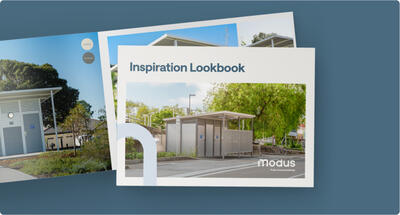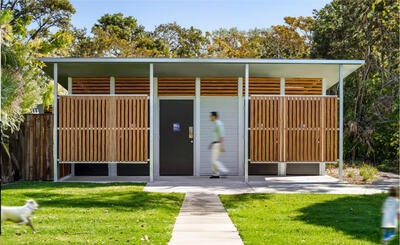Durability in toilet building design. How do you effectively build to last?
01 October 2024
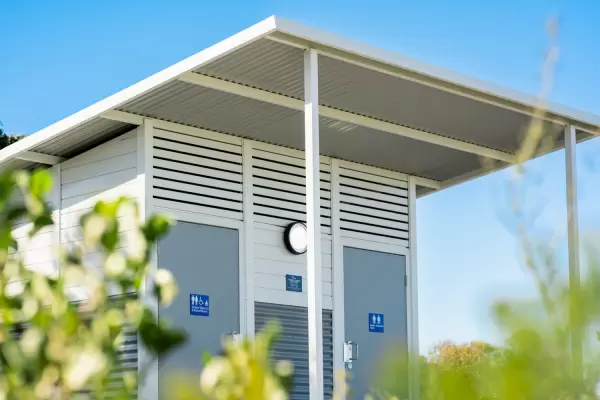
Durability a key consideration in toilet facility design, particularly in public, remote and high-risk environments.
Ensuring that your structure can withstand environmental stresses such as corrosion, bushfire, wind, and flood, or endure human vandalism, requires careful material selection and structural design.
It’s also often a game of trade-offs with cost battling against offered protection in the face of different design and environmental challenges.
Here are some of the key considerations and design responses for each of the chief environmental threats.
Threat 1: Coastal Corrosion
One of the primary challenges in public toilet construction, particularly in coastal or humid regions, is corrosion. Moisture-rich environments accelerate the degradation of many materials, especially metals.
To mitigate this, components like structural frameworks, roofing, and fittings should be constructed from corrosion-resistant materials — typically galvanised steel.
Galvanisation involves applying a protective coating of zinc to a metal through immersion in a molten zinc bath. Galvanisation won’t prevent corrosion indefinitely. However, a galvanised steel toilet structure by the ocean will vastly outlast one constructed from un-galvanised steel — even if it’s painted.
But not all galvanisation methods offer the same level of protection from salt corrosion.
One option is pre-galvanised (often abbreviated to “pre-gal”) steel that is galvanised before being cut to size and assembled by the manufacturer. Once removed from the bath, excess zinc is mechanically removed, leaving a thinnish galvanised coating.
The alternative method is called hot-dip galvanisation. Here, the finished product (say, a frame) is dipped in the zinc bath. This ensures complete coverage — even on inner surfaces such as inside metal tubes, or weld points.
Compared to pre-gal, the hot dip offers thicker, metallurgically bonded coating that is longer-lasting against the forces of rust and corrosion. It also avoids one of pre-gal’s weak points: exposed welds and cut areas. Because pre-gal welds are applied to the metal after the galvanisation process, they never receive protection and thus become a weak point that corrosion can attack. Because the weld is just steel.

Threat 2: Wind and Cyclones
Strong winds can pose a significant threat to toilet structures, especially in open areas. Cyclonic wind gusts can rapidly dismantle any facility that is not cyclone-rated.
Sturdy materials like galvanised steel for the frame and aluminium cladding for the exterior can provide strength, but assembly is also critical.
Designers must aim to prevent the building from lifting off from the concrete pad, and to stop roof sheets from being blown off the structure. If there's enough uplift, the wind will literally rip the head from normal brass screws, and the sheeting will rapidly follow.
To maintain integrity, designers must choose steel roofing screws with a larger gauge and bigger washer and clips to maintain greater purchase over the roof sheeting, and into the frame. Further, in cyclonic areas (Region D), a screw should be emplaced on every second rib on every barrel.
For the frame, the stainless steel threaded rods that go into the concrete pad must be larger, too.
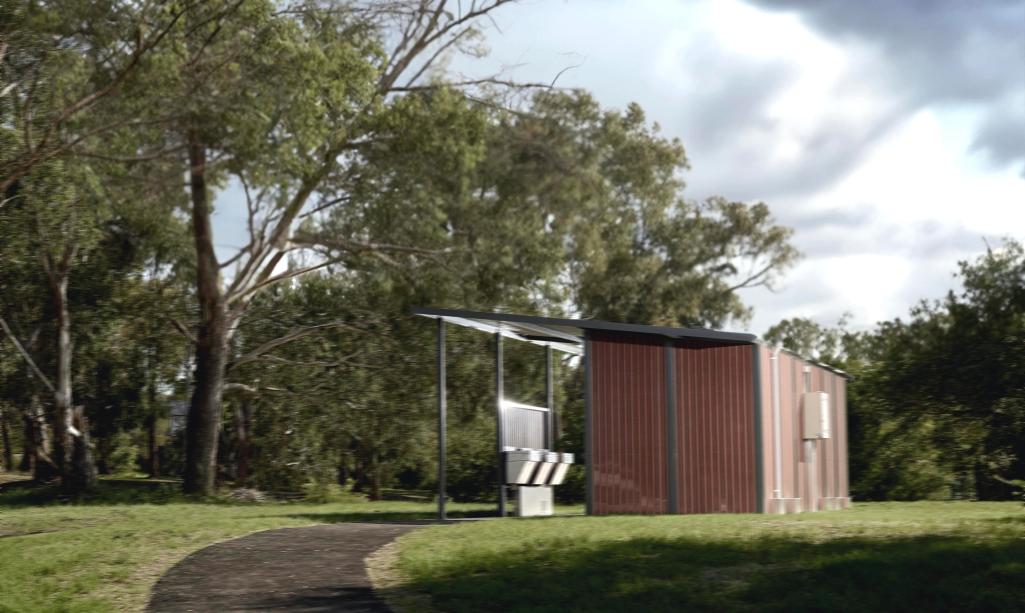
Threat 3: Water and flooding
In flood-prone areas, toilet facilities should be designed to withstand temporary immersion. Elevating the structure above the expected flood level is a primary strategy. Materials that can withstand water exposure without degradation are crucial.
Specify non-porous building materials and fixtures. They don’t absorb water and that prevents moisture penetration that renders materials such as gyprock and plasterboard useless when inundated.
Galvanised steel framing and aluminium cladding are both excellent choices, as they resist water damage and are easy to clean after a flood event.
Timber will rot. It’s simply less durable and can prove much harder and more expensive to clean and repair after a flood event.
Standard concrete flooring is naturally resistant to water absorption. Its durability can be further enhanced with sealants that strengthen its waterproofing. While not as impervious as epoxy, properly treated concrete can be a cost-effective and resilient option for flood-prone areas, offering good durability and ease of cleaning.
For fixtures, designers should consider those made from durable, high-quality stainless steel. These will be resistant to rust and degradation even after prolonged exposure to water.
Elevate all your electrical systems and install electrical outlets, switches, and wiring at higher levels to give them the best chance of staying above the flood. Minimise automation where possible, and use waterproof sealants.
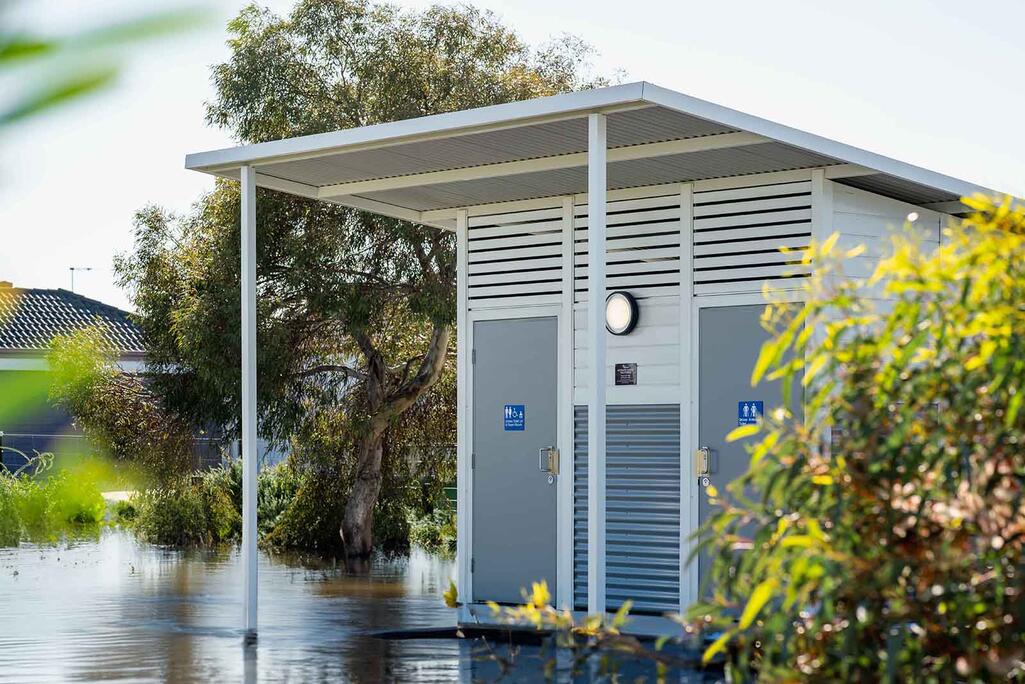
Threat 4: Human activity and vandalism
Some facilities are in locations that are frequented by people with a lot of time on their hands, and various tools at their disposal. Bluntly, the risk of anti-social behaviour and malicious damage to facilities is much higher.
hey also tend to experience lots of traffic, and high-impact use. Maintenance needs tend to be more intensive, and more expensive.
Stainless steel cladding (or aluminium composite materials) provides excellent impact resistance and is difficult to dent. The best designs use a ribbed profile that discourages graffiti and facilitates easier cleaning.
High-quality, durable stainless steel fixtures and doors provide increased impact resistance and greater cleanliness.
Of course, stainless steel is three or even four times more expensive than a porcelain unit. However, in locations where vandalism is an ongoing concern, stainless steel is likely to be much less expensive in the long run since porcelain can be shattered with incredible ease.
As a design feature, we would also recommend concealing the service area in a separate, user-inaccessible room. All users should see is the tap fixtures and push buttons on the back wall of the unit.
Lighting can also be susceptible to attack. In high-impact areas, polycarbonate lighting covers can be helpful since it flexes and does not easily shatter. This offers better protection for your lighting systems.
Threat 5: Bushfire
In areas prone to bushfires, toilet facilities must be designed to withstand extreme heat and flame exposure. They will have to be designed to adhere to a site-specific BAL (Bushfire Attack Level) rating — a measure of the severity of a building’s exposure to bushfire risk.
Non-combustible materials such as concrete, masonry, or steel should form the primary structure. That being said, concrete/masonry constructions are regularly 1.5 times more expensive than those made from galvanised steel.
Concrete and masonry is also more challenging in remote locations — site works take longer and are more disruptive to the environment. A steel structure, by comparison, can be prefabricated off-site then shipped in in modular form and quickly erected.
Colorbond aluminium cladding offers a durable exterior finish, as it has a high melting point and doesn't contribute to fire spread.
Reduce the amount of automation, too.
Traditional toilets, which are driven by simple mechanisms, are less vulnerable to fire damage. Automated toilets require sophisticated electronics and sensors that won’t survive a bushfire. Subsequent repairs and replacement require specialised (and thus expensive) technicians and costly replacement parts.
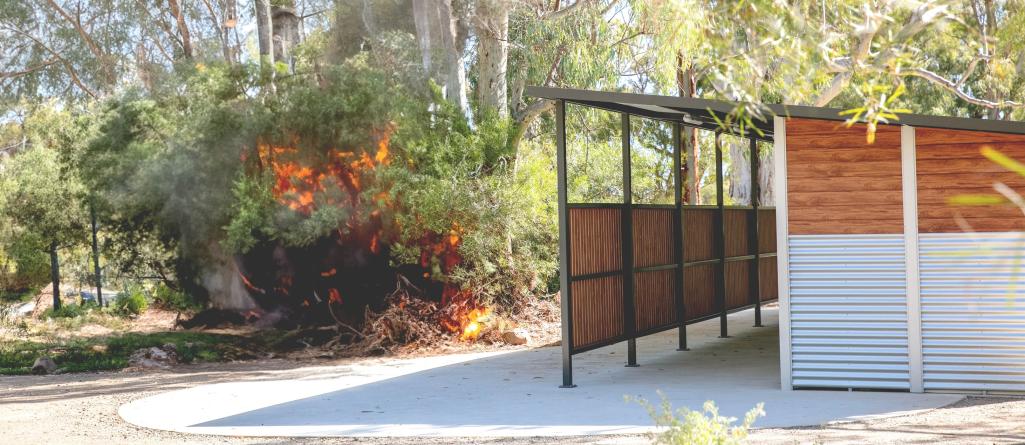
When should you build for durability, and why?
Always, always build-in durability to match requirements that are dictated by local environmental conditions. You wouldn’t build for flood resistance on high ground. Likewise, you wouldn’t design for cyclonic winds in a region that never gets cyclones. A one-size-fits-all approach to durability merely results in over-engineering and increases costs unnecessarily.
Nevertheless, you want a durable facility because you ultimately end up paying less in maintenance costs, replacements, and refurbishments.
Exploring your options
It’s crucial to recognise that each project is distinct. Our approach draws on a thorough understanding of the local area, taking into consideration your community infrastructure requirements as well as the different environmental stresses your project will be exposed to.
Our facilities have been located in some of Australia’s most-demanding environments and have endured aggressive coastal corrosion, cyclones, heavy snow loads and floods. This is a testament to our rigorous selection of the hardiest materials and coatings, and stringent engineering standards.
(It’s why we offer a 15-year warranty on public toilet construction.)
If you’re unsure about the best way forward for your toilet facility, call us on 1300 945 930 or learn about our design consultation below.
Have a project to do?
Planning a toilet building project can be complex but we’re here to help. Reach out or start your project consultation today.
View Inspiration Lookbook

